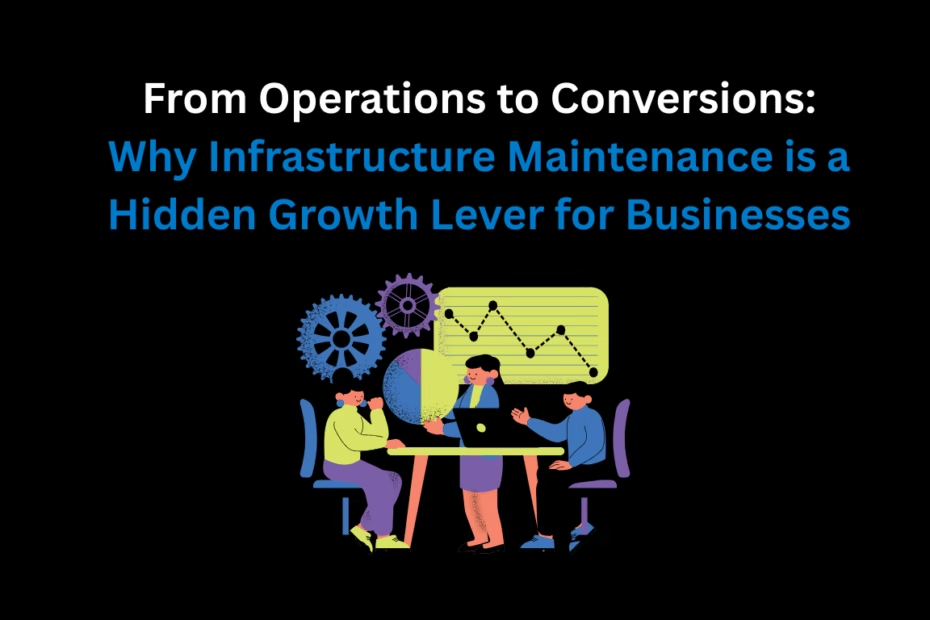When businesses talk about growth, they usually focus on sales funnels, marketing campaigns, or website conversions. But there’s an often-overlooked factor that can make or break a company’s efficiency — the state of its infrastructure and maintenance systems.
Whether you operate a high-traffic retail space, a corporate office, or a manufacturing facility, your physical environment plays a significant role in productivity, customer satisfaction, and even online conversion rates. Disruptions in daily operations caused by maintenance issues can ripple into your marketing metrics in ways you might not expect.
The Overlooked Connection Between Operations and Conversions
Conversions happen when customers can move seamlessly from awareness to decision-making without unnecessary friction. Most marketing teams focus on removing digital friction — slow website load times, unclear messaging, or complicated checkout processes. But offline disruptions can create friction, too.
Imagine a coffee shop that’s a local favorite suddenly facing a plumbing issue that forces it to close for a day. Not only is revenue lost for that day, but online reputation can take a hit from unhappy customers leaving negative reviews.
The same is true for corporate offices — if employees are constantly dealing with disruptions caused by faulty infrastructure, their productivity drops. Marketing projects get delayed, customer service suffers, and the business as a whole sees slower growth.
The Cost of Neglecting Physical Maintenance
Here are some ways neglected infrastructure maintenance can harm your business:
- Operational Downtime
- Every minute your office, store, or facility is non-functional is lost revenue.
- Service interruptions can erode customer trust and loyalty.
- Reputation Damage
- Customers share experiences — both good and bad. A broken facility or unsanitary conditions can spark social media backlash.
- Employee Morale Decline
- Physical discomfort or unsafe working conditions can lower staff engagement and increase turnover.
- Increased Long-Term Costs
- Small maintenance issues can escalate into costly emergencies if left unresolved.
Case in Point: Facilities Maintenance in Urban Environments
Urban businesses face unique challenges when it comes to maintenance. High foot traffic, older buildings, and limited downtime windows mean problems can escalate quickly.
For example, plumbing issues like blocked drains in London can cause major disruptions for offices, restaurants, or retail spaces. In such cases, quick professional intervention isn’t just about fixing pipes — it’s about protecting business continuity, preventing reputational harm, and keeping customers coming back.
In busy cities, delays in addressing these issues can have exponential effects. If a high-end restaurant has to close for two days due to drainage problems, it may lose more than just immediate sales — it could lose future bookings, media coverage, and even investor confidence.
Infrastructure as Part of Your Conversion Optimization Strategy
Conversion optimization isn’t just about your website. It’s about ensuring every part of your business environment supports customer decision-making — online and offline.
Here’s how infrastructure ties into conversion strategy:
- Customer Experience Consistency
- If your in-store experience matches your online promises, you build trust and brand loyalty.
- A well-maintained space communicates professionalism and reliability.
- Operational Flow
- Smooth physical operations mean your team can focus on delivering value instead of firefighting maintenance issues.
- Crisis Management
- Having rapid-response systems for physical issues keeps disruptions minimal.
Action Steps for Businesses
- Conduct Regular Facility Audits
- Schedule monthly inspections for plumbing, electrical, and structural elements.
- Keep a maintenance log to spot patterns before they escalate.
- Build Partnerships with Reliable Service Providers
- Whether it’s IT systems or plumbing, have a pre-vetted provider ready.
- For businesses in the UK capital, trusted specialists in blocked drains London can be a lifeline.
- Train Staff to Spot Early Warning Signs
- Educate employees on reporting issues before they disrupt operations.
- Integrate Maintenance into Your Growth KPIs
- Track how operational disruptions impact marketing timelines, customer satisfaction, and revenue.
Digital and Physical Conversions Are Linked
A slow-loading website and a leaking ceiling may seem worlds apart, but both can stall conversions. Both create friction that prevents customers from engaging fully with your business.
Investing in infrastructure maintenance is, in essence, investing in conversion optimization. It ensures your physical and digital touchpoints align to create a smooth, reliable, and professional customer experience.
Read More: Bankroll Management for Beginners: How to Set Limits and Stick to Them
Conclusion
In the age of data-driven growth strategies, it’s easy to overlook the impact of something as tangible as a well-functioning plumbing system. But smart businesses know that conversion optimization begins long before a visitor clicks “Buy” — it starts with the operational foundation of your business.
From avoiding the pitfalls of downtime to maintaining brand reputation, proactive infrastructure maintenance is one of the most underutilized levers for growth.

